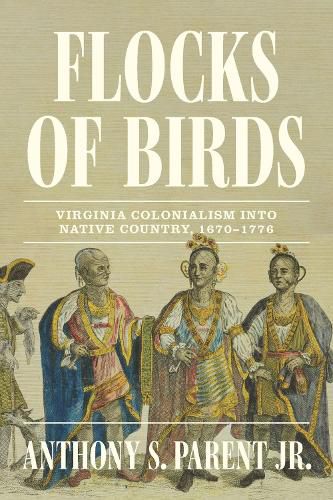Readings Newsletter
Become a Readings Member to make your shopping experience even easier.
Sign in or sign up for free!
You’re not far away from qualifying for FREE standard shipping within Australia
You’ve qualified for FREE standard shipping within Australia
The cart is loading…






Centers Indigenous people and voices in the history of the vast expansion of Virginia colonialism into Appalachia Flocks of Birds is an inclusive and interconnected history of the Virginia colony, one that demonstrates the centrality of Native history to America's colonial history. By delving deep into the primary record, Anthony S. Parent explores the evolving Indigenous response to Virginia colonialism in Native country across three generations, from 1670 to 1776.
As Virginia colonists expanded their settlements west from the Tidewater, they entered a region that was far from uninhabited wilderness. In 1685 more than 100,000 Indigenous people from dozens of nations lived in the Southern Appalachians. These were different groups than the Tsenacomoco (the Powhatan Paramount chiefdom) that colonists had encountered when they established their first permanent settlements along the coast. They included Susquehannock in the north; Shawnee and Seneca-Cayuga (Mingo) in the northwest; Saponi in the west; Tuscarora and Yamasee in the south; and the Ani'-Yun-wiya (Cherokee) in the southwest, among many others. Parent explores the complex interactions amongst and between Indigenous people, European colonists, and enslaved Africans.
$9.00 standard shipping within Australia
FREE standard shipping within Australia for orders over $100.00
Express & International shipping calculated at checkout
Centers Indigenous people and voices in the history of the vast expansion of Virginia colonialism into Appalachia Flocks of Birds is an inclusive and interconnected history of the Virginia colony, one that demonstrates the centrality of Native history to America's colonial history. By delving deep into the primary record, Anthony S. Parent explores the evolving Indigenous response to Virginia colonialism in Native country across three generations, from 1670 to 1776.
As Virginia colonists expanded their settlements west from the Tidewater, they entered a region that was far from uninhabited wilderness. In 1685 more than 100,000 Indigenous people from dozens of nations lived in the Southern Appalachians. These were different groups than the Tsenacomoco (the Powhatan Paramount chiefdom) that colonists had encountered when they established their first permanent settlements along the coast. They included Susquehannock in the north; Shawnee and Seneca-Cayuga (Mingo) in the northwest; Saponi in the west; Tuscarora and Yamasee in the south; and the Ani'-Yun-wiya (Cherokee) in the southwest, among many others. Parent explores the complex interactions amongst and between Indigenous people, European colonists, and enslaved Africans.